Around her eighteenth birthday, a girl from the southern rural United States makes a discovery. Emmy had long thought – as many other young people also think – that she was special. Emmy discovers a dark secret and it turns out that the place where she grew up, Harrow County, harbors other dangerous and dark secrets, cases and events.
Background
Harrow County is an American comic book published by Dark Horse Comics, written by Cullen Bunn and illustrated (primarily) by Tyler Cook. Besides Cook, there are specific editions illustrated by other illustrators, but Cook’s style based on the comic bearing the same name.
Harrow County is a dark horror comic with a Southern Gothic setting. This means it is set in the deep south of the U.S. countryside with its swampy landscapes, heavy accents, racial inequality, and a lot of hoodoo (not voodoo) and other dark magic.
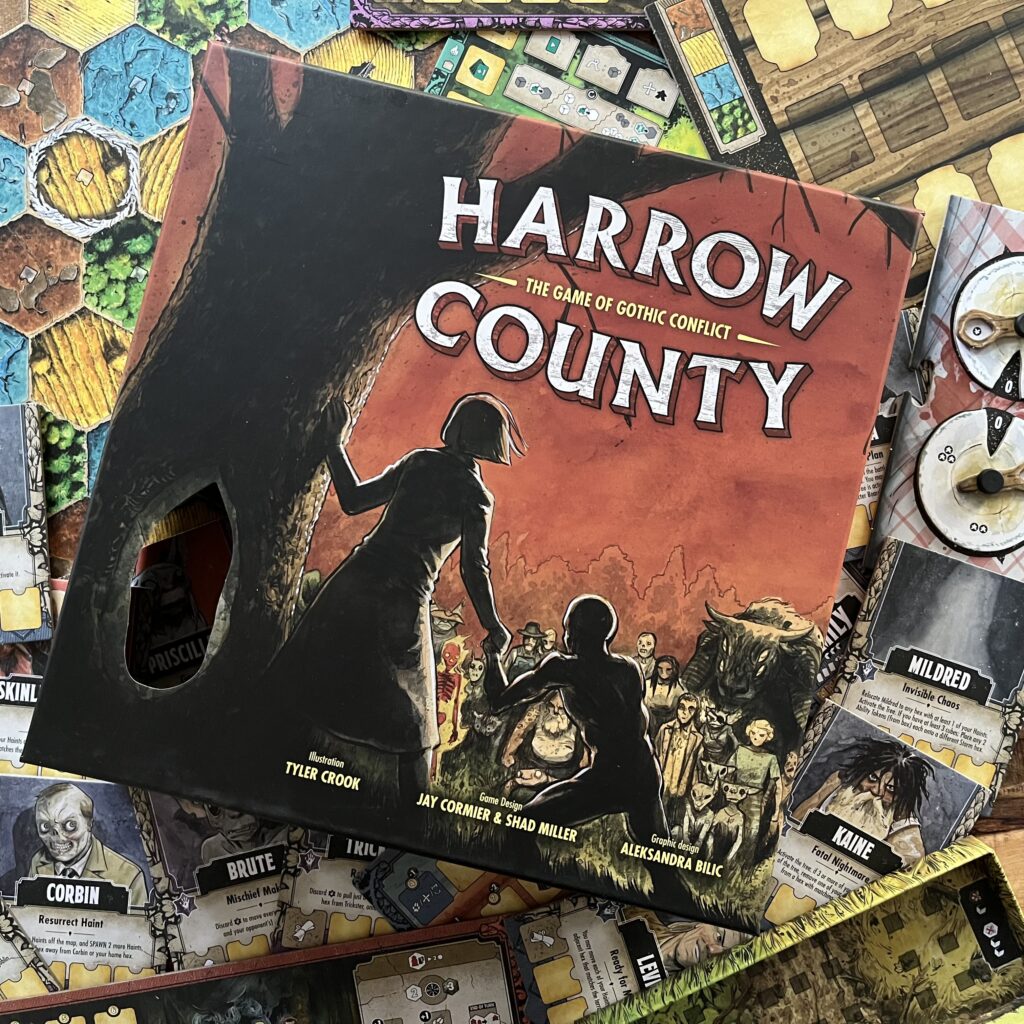
The comic – and thus also the board game – are set in the town of Harrow County. Some 18 years ago, the medicine woman Hester Beck had quite an influence on Harrow County until the residents turned against her and killed the witch by, among other things, hanging her from a tree. In the same tree, Emmy is left as a foundling and found by the villagers who take care of her and, in particular, by her foster father. Despite their love for Emmy, the villagers worry about her suspected connection to the witch.
In Harrow County, a battle is raging around influence over the scary place. Besides Emmy, Harrow County has other important characters and characters: other villagers, haints (spirits and creatures from the old south), goblins, as well as the mysterious and magical Family who have a connection to Hester Beck. Many of these characters return in the board game and, as with the comic book, you will slowly get to know them. Indeed, Harrow County is a somewhat narrative game, but not in the way you might expect.
It is not a legacy game nor does it have a narrative campaign, but it is divided into chapters. Each chapter introduces new game elements and rules, as well as sometimes entirely different game modes or alternate rules. During the chapters you also unlock new characters and learn more and more about Harrow County. Most chapters are for two players, but one of the later chapters is played with three players. This is one of the things that makes Harrow County as special and this also provides a way to make this somewhat complex story and game manageable, as players can learn it through play.
Goal and setup
I’m going to be fairly brief about the setup, as the game introduces new game elements for each chapter and the setup can vary reasonably from chapter to chapter. In each chapter, a player is assigned a group and this player is given the corresponding components of this side of the conflict surrounding Harrow County.
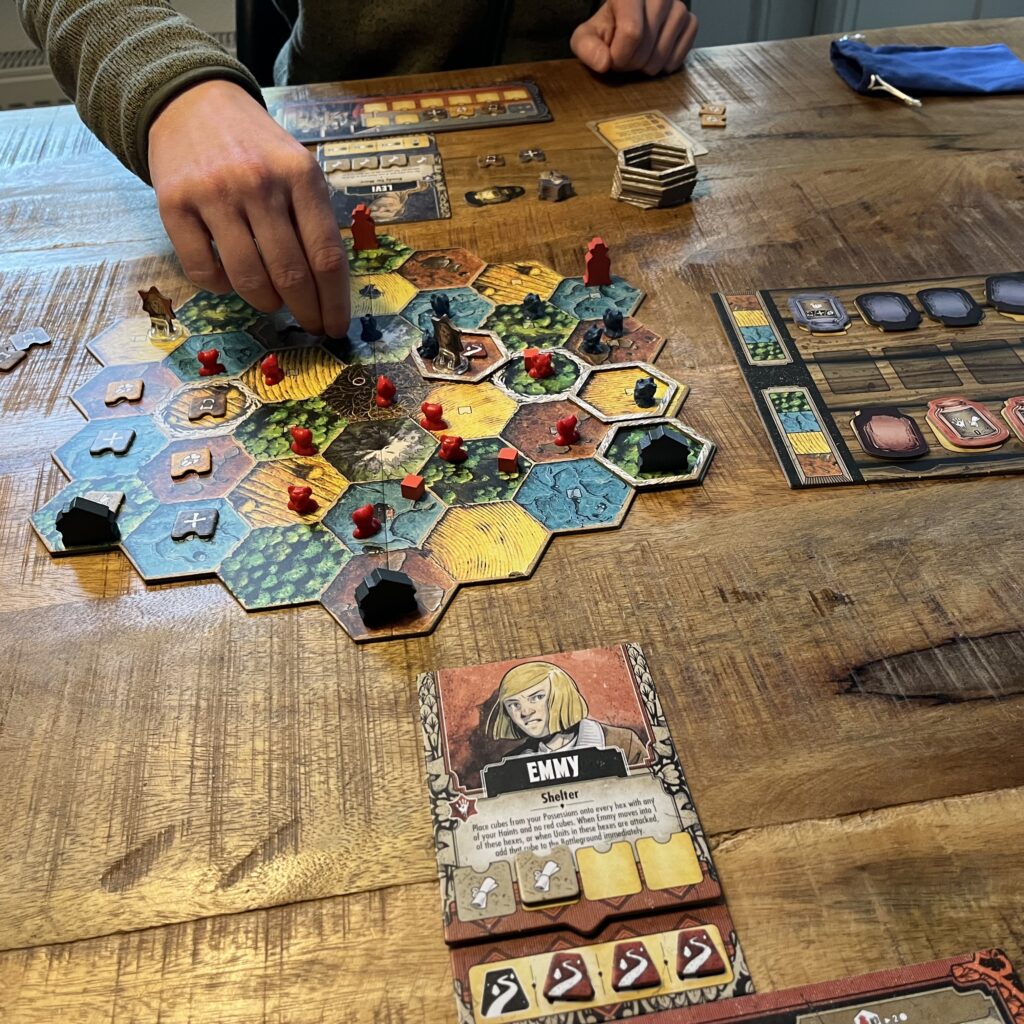
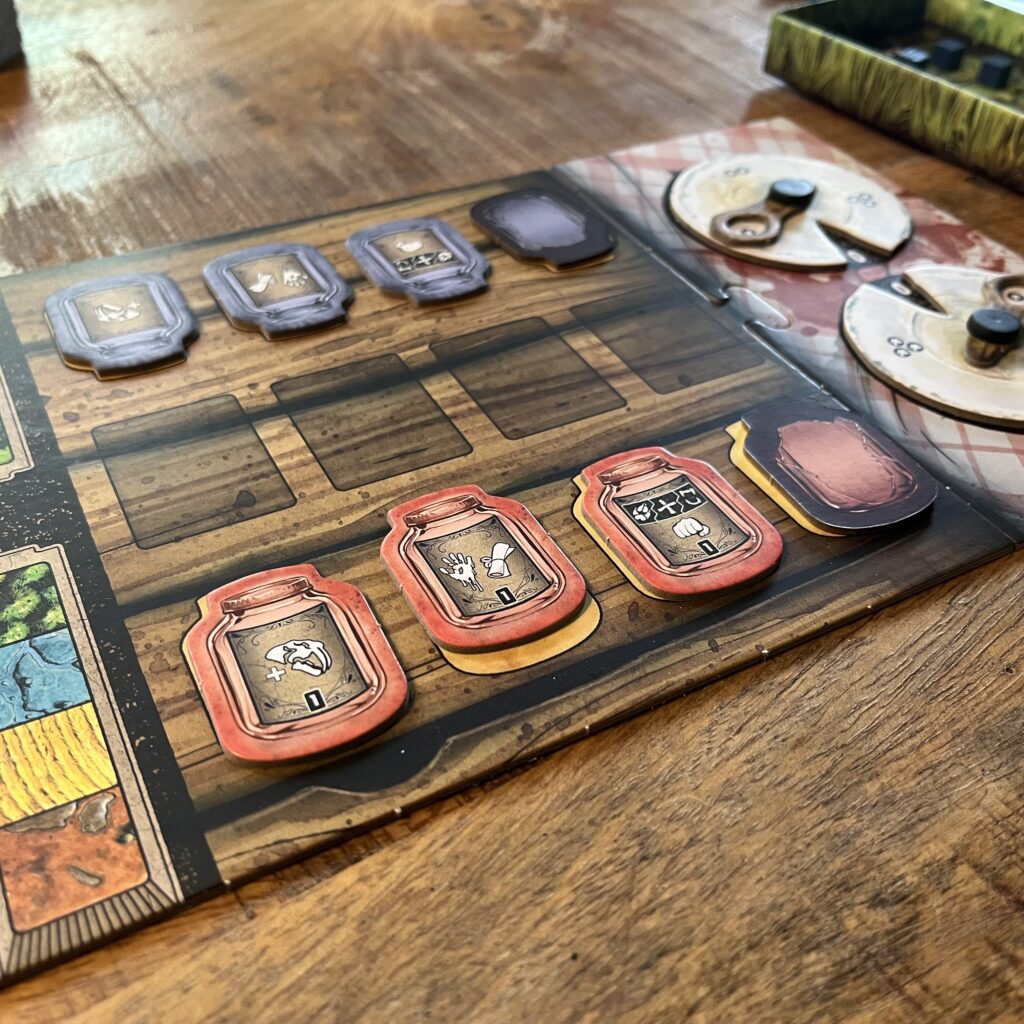
Harrow County is completely asymmetrical so the game components differ per player and also the objectives and also the mode of play. If a player achieves his objectives, that player earns points. Players also get points for engaging in battles and once a player has gathered enough points, the game ends. Harrow County combines several game elements and at times resembles a 4X game with some unique twists. Players try to collect tokens to strengthen their skills, take control of the game board, spend power cubes to make their attacks stronger and, of course, achieve their objectives.
Gameplay
In this review we are not going to describe the rules in detail, because players will discover this for themselves during the course of the various chapters. So we will keep it general in order to give a good impression. Central to the course of the game are mason jars. Readers of Harrow County know that these mason jars play an important role in the history of Mason Hollow, a town in Harrow County, and particularly in connection with certain magic in the region. In the game, the mason jars equate to actions players can take. All types of players use mason jars, but the effect of the action varies by role/player. Incidentally, the different playable characters all have unique properties as well.
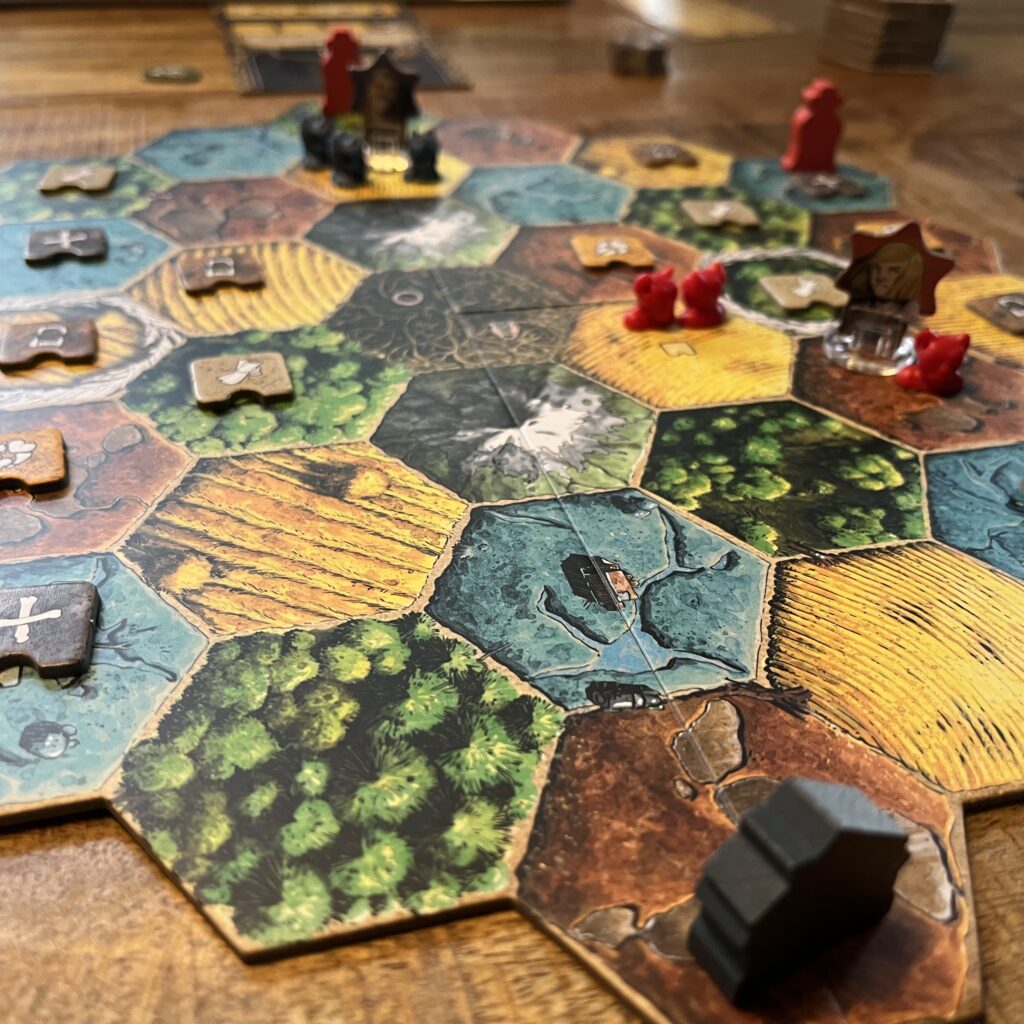
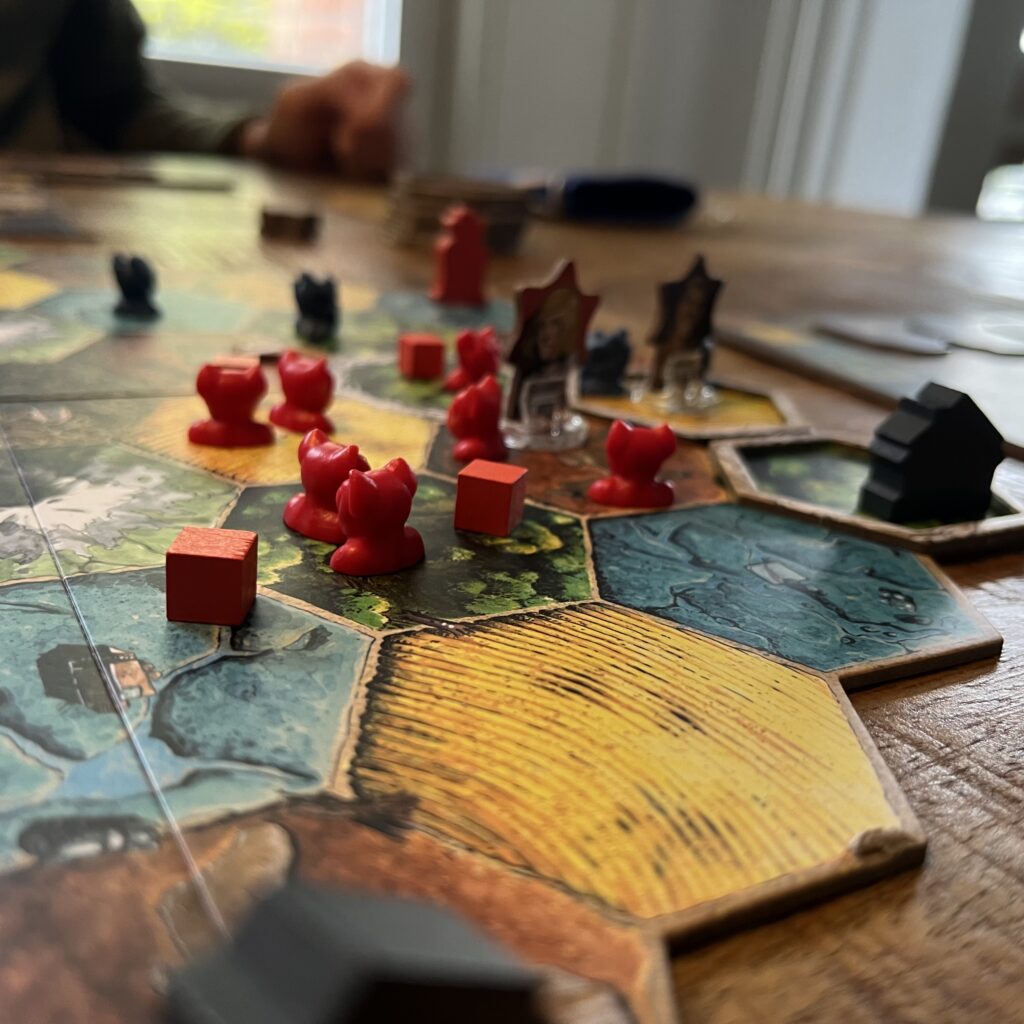
Each round, players will activate three of their four mason jars. They can activate their skills based on their skill tokens. Each player activates their skills differently. For example, the Protectors (including Emmy) always activate a single skill and the effectiveness of the action depends on how many tokens they have collected from that skill type. The Family, on the other hand, draws chits from a bag and can activate multiple types, but depends on luck. Players can collect new chits on the game board. The skills allow them to move, summon new haints and increase strength.More on the latter later.
With another weckpot they can collect game tokens for skills of their choice, and with the legend weckpot they can activate special actions of their group and character. With the last weckpot, they can attack. Attacking is done in a special way, because players add cubes (power) to the battlefield during the game and once a battle takes place, the visible cubes are thrown into a kind of dice tower that is part of the game box. This tower is a representation of the tree where Hester Beck was hanged.What is special about this tree is that not all the cubes fall out of the tree at the same time, but some stay put until a later round. The amount of cubes that fall from the tree determines your strength during a fight, but you don’t know beforehand how strong your attack or defense is, but the amount of cubes you add to the tower obviously affects your chances. By the way, you can also sacrifice another mason jar to attack again during a round.
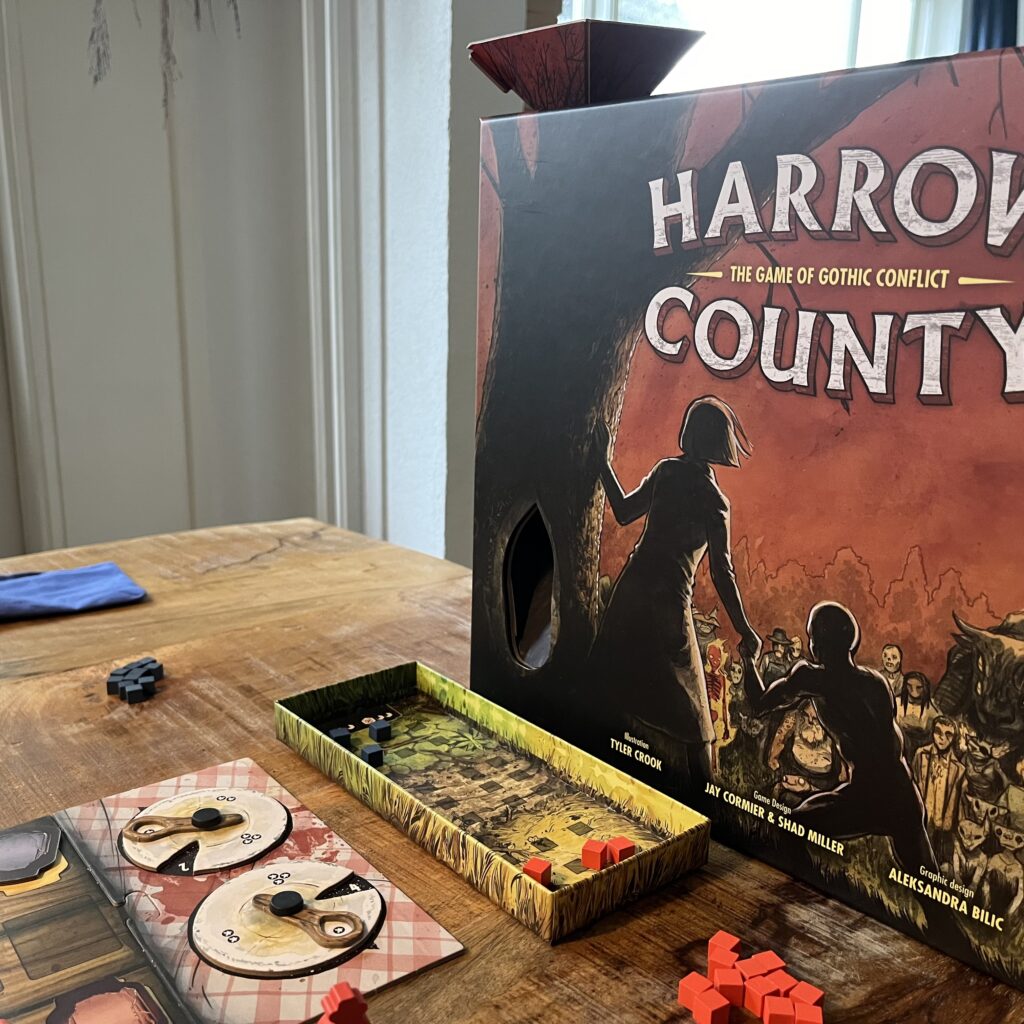
Through battles, players can earn points and each group also has its own objectives and once you achieve enough points, you have won.
Conclusion
Before starting my Harrow County board game adventure, I decided that I would read the comic book first. What I got was an interesting setting, atmosphere and beautiful illustrations that is reflected in the game. The board game offers a unique experience because of the different game mechanics (a kind of 4X-light combined with the cube tower and the use of the mason jars to plan your actions) and the asymmetrical nature of the game. Because you learn the game through play, the new mechanics are manageable and you are also gradually introduced to the that in-depth game. The different elements of the comic book are well incorporated into the game such as the different characters, thematic mechanisms and creepy atmosphere.



